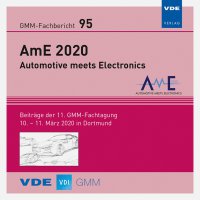Impact of Highly Efficient Power Electronics on the EMC in Electric Vehicles With Autonomous Driving Functions
Konferenz: AmE 2020 – Automotive meets Electronics - 11. GMM-Fachtagung
10.03.2020 - 11.03.2020 in Dortmund, Deutschland
Tagungsband: AmE 2020 – Automotive meets Electronics
Seiten: 4Sprache: EnglischTyp: PDF
Autoren:
Jeschke, Sebastian; Loos, Jan; Kleinen, Michael (EMC Test NRW GmbH, Dortmund, Germany)
Inhalt:
To further increase the energy efficiency respectively the driving range of electric vehicles, silicon carbide (SiC) and gallium nitride (GaN) semiconductors are used. These semiconductors are able to switch the battery voltage much faster and therefore increase the vehicle components’ efficiency. Another method to enhance the efficiency is to increase the battery voltage, which reduces the current losses in the traction system. The drawback of both of these methods are the significantly increased electromagnetic emissions of the vehicle’s high-voltage (HV) components. Alongside with the drivetrain electrification, autonomous driving functions are implemented in the vehicle using automotive Ethernet to handle the rising amount of data traffic. The communication is realized by a differential signal voltage level of ±1V in half-duplex operation, which leads to a potential vulnerability to e.g. pulse disturbances. In this work, the impact of the modifications in the traction system on the emission behavior is investigated, using a power electronics test setup. Furthermore, the impact of HV pulses on a parallel routed automotive Ethernet communication line and its performance is examined.


